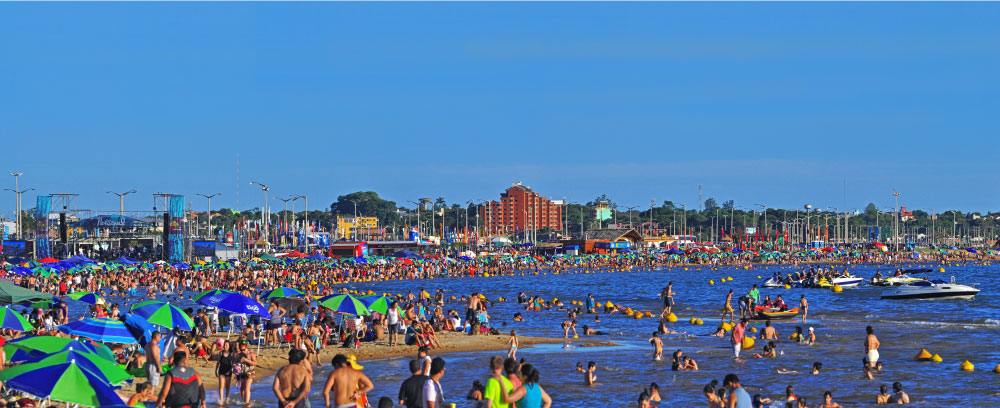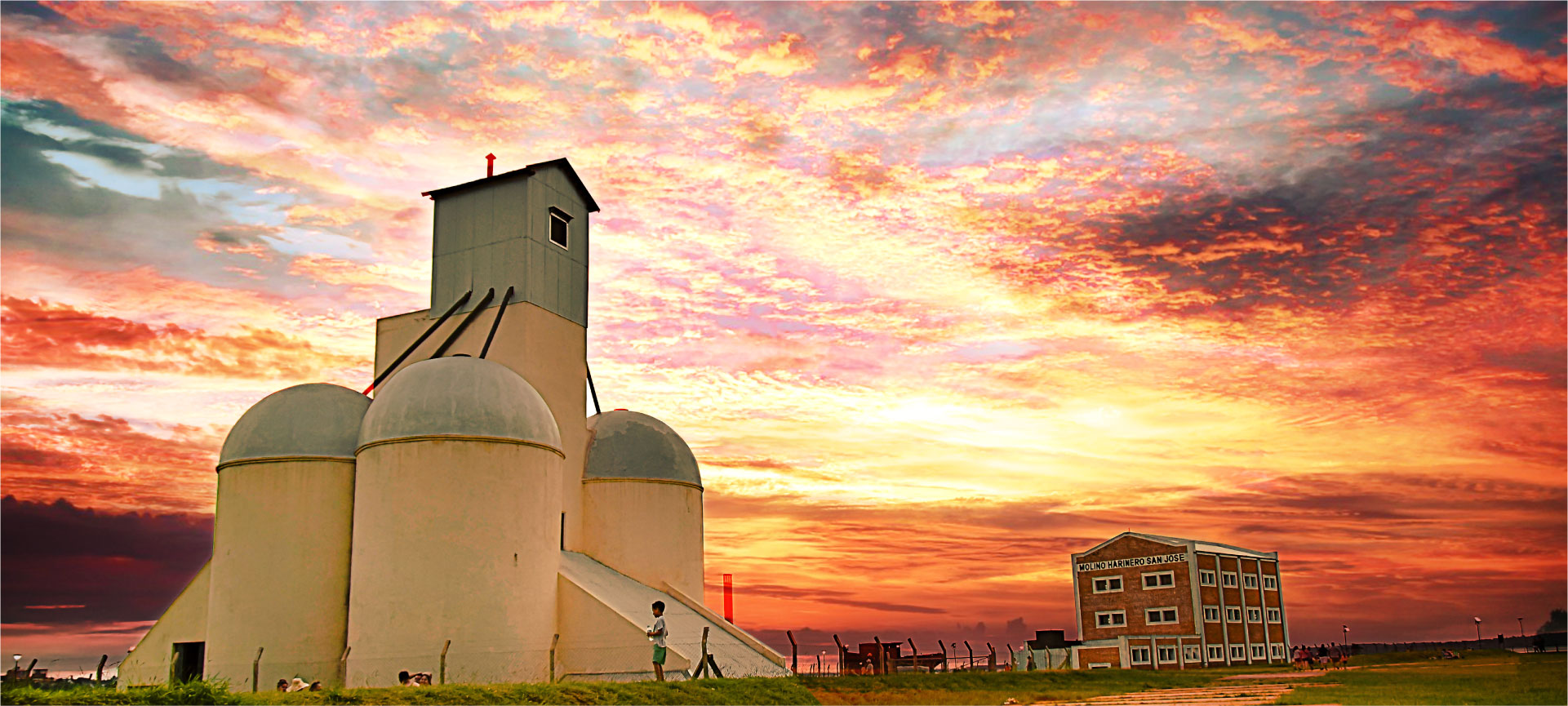SOUTHERN ZONE
Departments: Ñeembucú, Misiones e Itapúa
Departments: Ñeembucú, Misiones e Itapúa
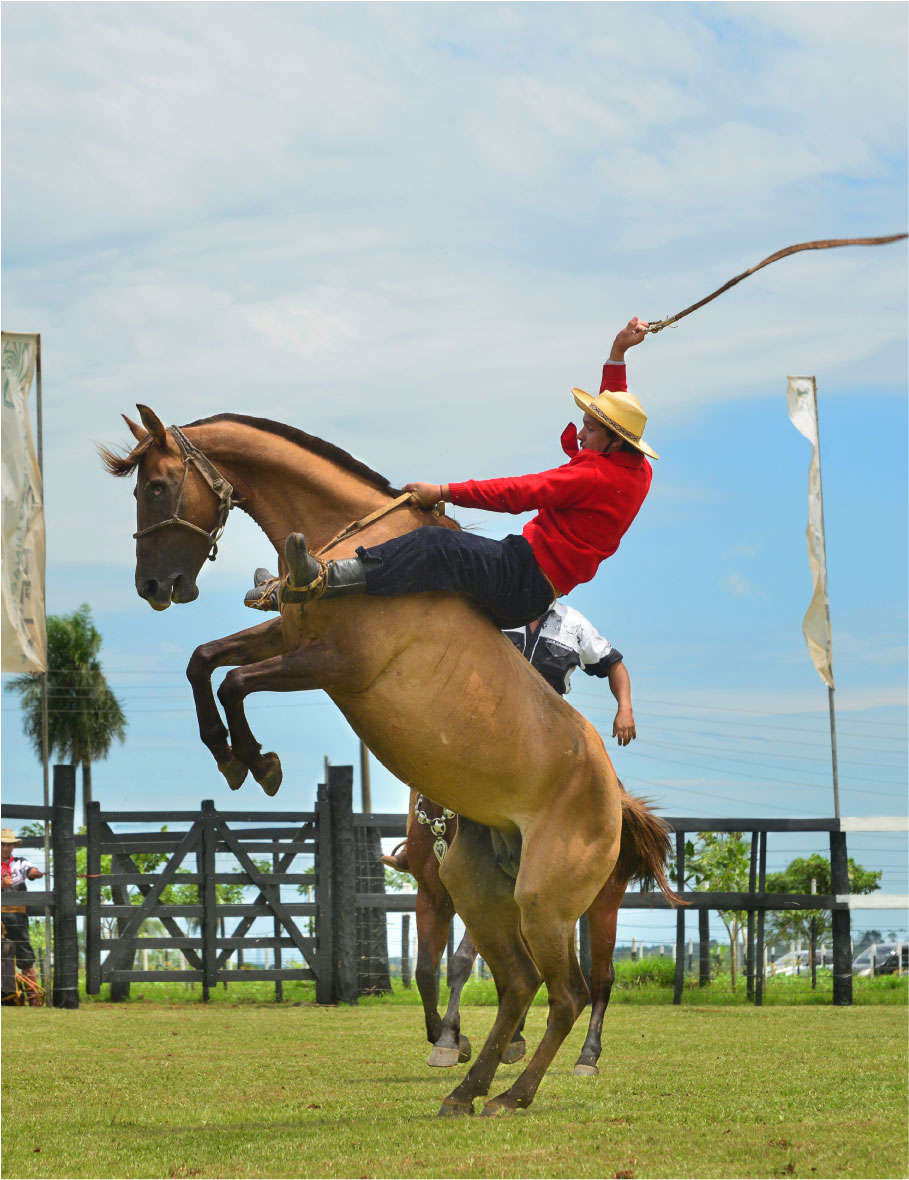
Fiesta de la Tradición Misionera
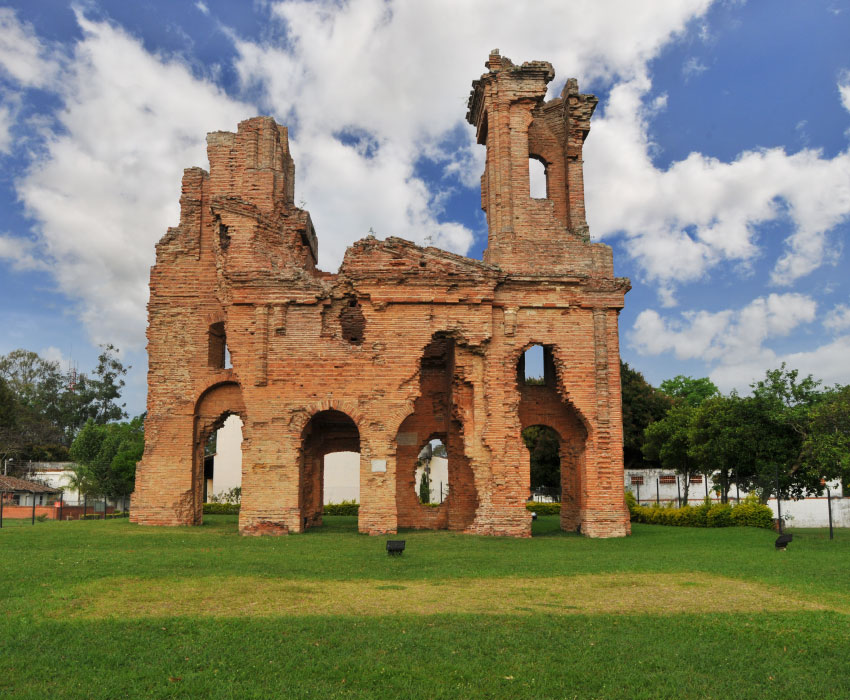
Ruinas de Humaitá, Dpto. de Ñeembucú
In the south, visitors will be able to immerse themselves in history, nature, and fun, while discovering historical sites of the Triple Alliance War, the Jesuit missions and reductions of the 17th century, the attractive beaches of Encarnacion and Carmen del Paraná, and mingling with the different groups of immigrants that populated the region.
The Ñeembucú Department is known for the exuberance of its biodiversity and where one can find estiges of the Triple Alliance War (1865-1870) waged by Paraguay against Brazil, Argentina, and Uruguay. Located in the southwestern corner of the country, the region lies under the charm of the imposing beauty of its wetlands, where the Paraguay and Paraná rivers form a great setting for a historical and natural sanctuary.
The tourist and historical circuit begin in Pilar, the department’s capital, where t he Basilica Nuestra Señora del Pilar and the old Cabildo, now converted into a museum, are located. The historical tour can continue in Humaitá, on the banks of the Paraguay River, where the San Carlos de Borromeo Church ruins, and remains of the fortification prepared to defend against the allies are located. A few kilometers away, the fields of
Tuyutí stand solemnly; the greatest military confrontation in America’s history took place took place here, and this is also where you can find the Curupayty trenches.
The department’s tourist offer is completed with wild beaches, such as Laguna Sirena, in the district of Cerrito, with its three km of white sand and crystal-clear waters, and its dunes on the banks of the Paraná River.
The entire department offers delicious cuisine based on fish. For lovers of sport fishing, the waters of the Paraná, Paraguay and Tebicuary rivers are habitats for the dorado fish, pacú, surubí, croaker and other species. Paraguay allows fishermen and women to carry out the following types of sport fishing: spinning, trolling, fly cast (fly fishing) and bottom fishing.
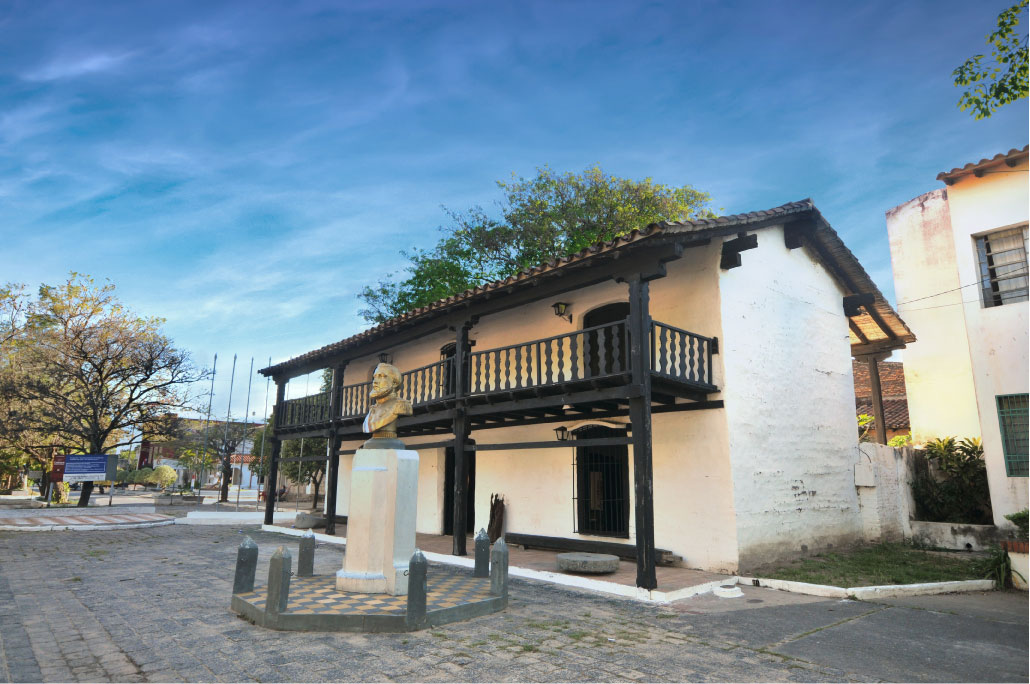
Museo Cabildo, Pilar
The Misiones Department’s history is marked by the strong presence of 17th-century Jesuit Missions that have today converted into cities, such as San Juan Bautista, San Ignacio Guazú, Santa Rosa, Santiago, and Santa María. These towns preserve the relics of that time, such as colonial buildings and churches, while part of the historical heritage is exhibited in museums, such as the valuable wood carvings made by the indigenous people in the missions.
In San Ignacio Guasu (1609), the Diocesan Art Museum of the Jesuit Reductions stands out and is considered the oldest construction that is still in use in Paraguay, a true jewel of adobe architecture.
In the city of Santa María de Fe (1647), we find the Jesuit Museum, housed in an original sector of the Jesuit Mission’s old indigenous lodgings with a more than 2- meters high image of a virgin carved by the indigenous in wood.
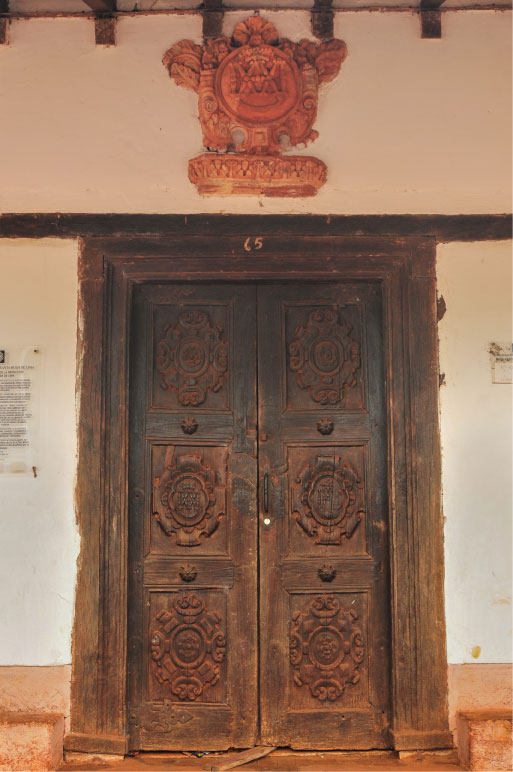
Museo de Arte Jesuíta, Santa Rosa de Lima
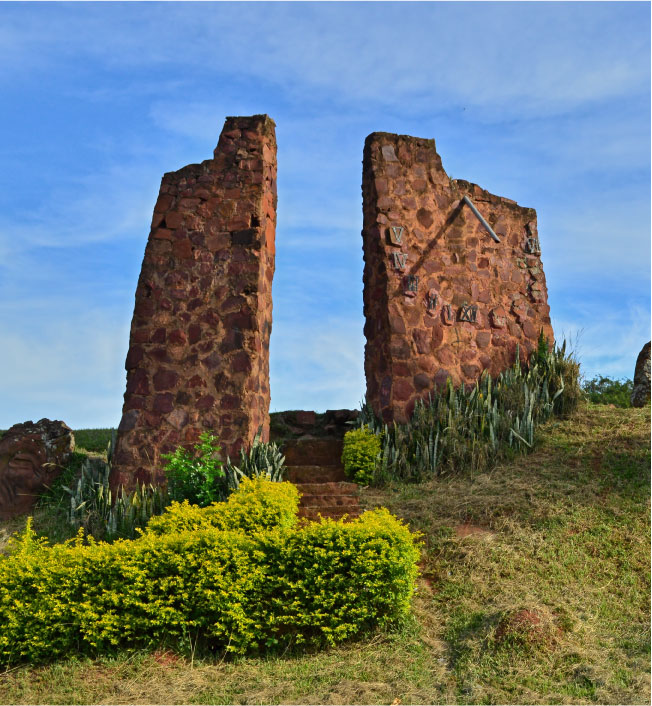
Reloj solar, San Ignacio
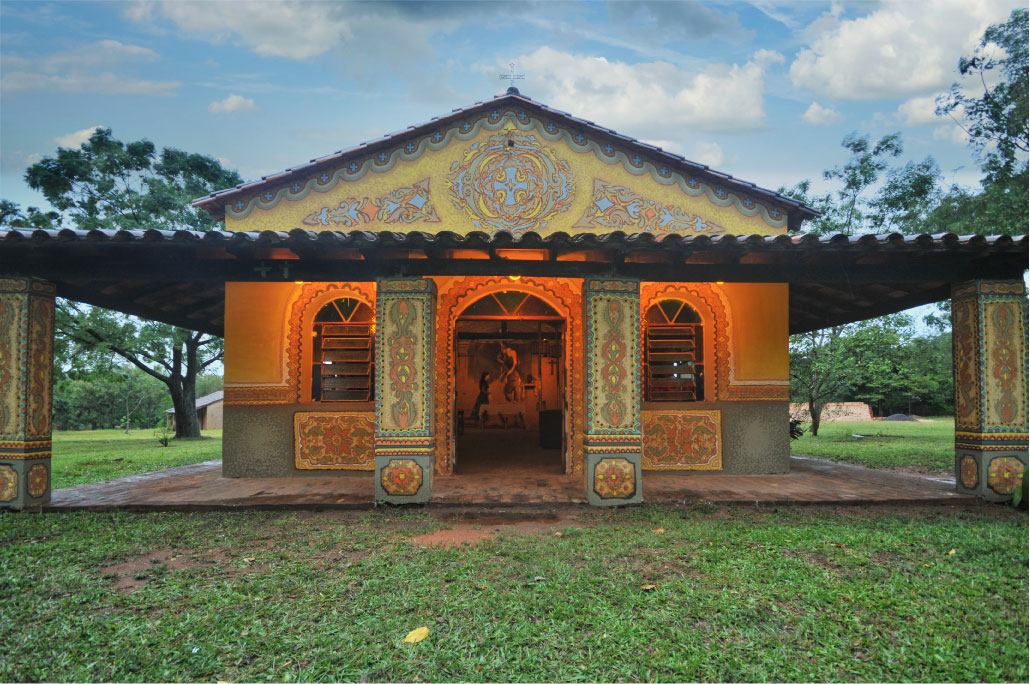
Capilla de Tañarandy, San Ignacio
The city of Santa Rosa de Lima (1698) has among its attractions the original 20-meter-high bell tower built in red stone, vestiges of the original church, as well as a complete indigenous house. In the chapel of Our Lady of Loreto, its frescoes truly impress viewers, as well its walls, which were originally painted by indigenous communities almost 400 years ago and have been preserved intact.
The city of Santiago has the best urban-Jesuit historic center, with the old indigenous houses lining the square, and a museum of great archaeological value. In the church altar, tourists can admire the complete original altarpiece, unique among Mission remains, apart from the images of the Santiago and San Isidro apostles, among others. Other cities in the department, such as Villa Florida, Ayolas and Coratei, offer a different variety of attractions with their beaches and water rides, Paradise Island, and sport fishing.
Misiones is mainly livestock breeding area, and offers exhibitions, festivals, and traditional and gastronomic festivals such as the Missionary Tradition Festival in the city of Santiago, in January, where thousands of people attend each year.
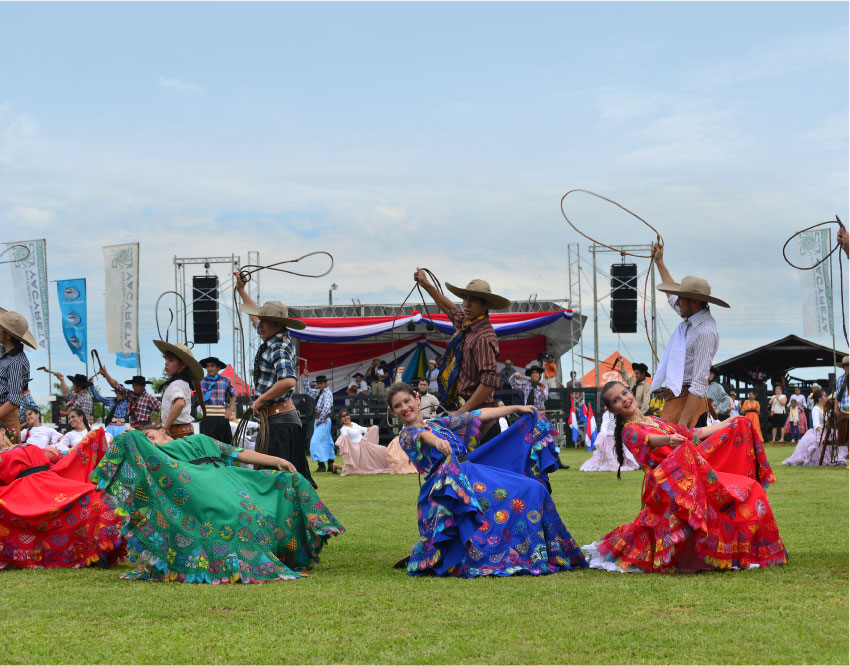
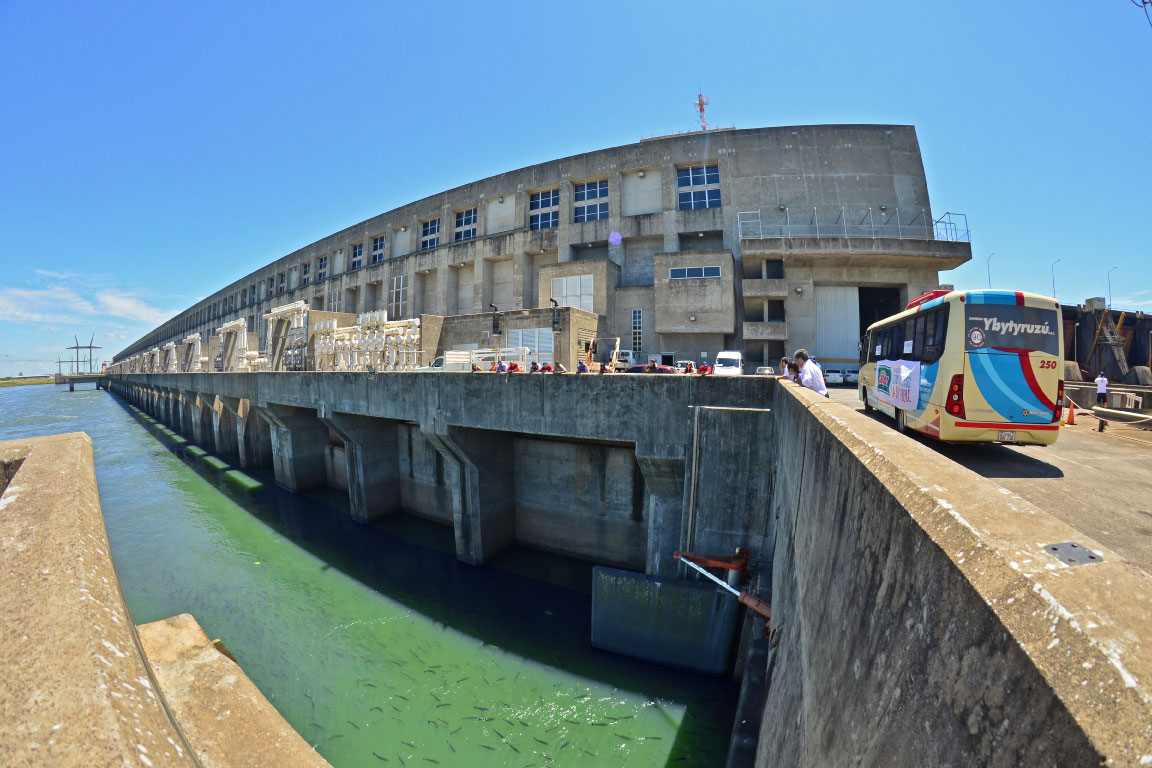
The Good Friday Procession in the Tañarandy district of San Ignacio Guasu is a unique celebration, definitely worth seeing and participating in. Community residents, together with thousands of visitors who arrive from different parts of the country and abroad, light thousands of handmade candles that illuminate the 3 km long Via Dolorosa and guide the solemn procession to “Golgotha” at sunset. At the end of the route, in a specially prepared site, Jesus descends from the cross.
In San Juan Bautista, the department’s capital, the Festival of Batiburrillo, Sanjuanino Sausage and Siriki takes place at the end of January. People share and learn more about the traditions of the southern part of the country, visiting stands that offer traditional Paraguayn dishes.
You can find and taste regional gastronomy, the country’s typical foods and various foodstuffs along the National Route No. 1, that crosses the department, as well as in the cities’ restaurants, inns, hotels, bars, dining rooms. Among the many options, you can savor roasts, missionary sausages, hodgepodge, stews, etc.
The area’s typical crafts have a strong presence in the city of San Miguel, 180 km from Asunción. It is characterized by crafts and clothing made of sheep wool, cotton fabrics and wooden utensils with original designs, all sold at reasonable prices, and exhibited along the route or in small craft workshops in private homes.
The Yacyretá Hydroelectric Dam, located in Ayolas, is a must-see tourist attraction in the department. It is a set of civil works carried out between Paraguay and Argentina on the Paraná River, which has an artificially created water reservoir that is 67 km long. It is the 5th largest dam in South America. The entity strongly supports environmental protection. It sponsors the Yacyretá Regional Museum in the city of Ayolas, and the Atinguy Wildlife Refuge located 18 km from Ayolas, which houses mammals, birds, and reptiles. The refuge provides optimal conditions for animals to live naturally.
Capital: Encarnación
The Itapua Department is intimately linked to the culture and legacy of the Society of Jesus. The capital of the department, Encarnacion, founded in 1615, is a modern city today, with many attractions for visitors such as its beaches on the Paraná River and its well-known carnivals. The department is home to the Santísima Trinidad del Paraná (1706) and Jesús de Tavarangüé (1685) missions, declared World Heritage Sites by UNESCO.
While in Itapúa, one can enjoy beautiful beaches on the Paraná River, mainly in the cities of Encarnación (San José, Pacú Cua and Mboi ka’e) and Carmen del Paraná (Tacuarí, Pirayú and Ybycuí). These cities have beautiful waterfronts that invite you to take romantic walks to admire the idyllic sunsets on the banks of the flowing river.
Another attraction in the Southern Zone that cannot be missed are the San Cosme and Damián dunes, one of many paradisiacal places found in Paraguay. Many years ago, they were just some dunes on top of a hill over the Paraná, but with the rise of the river due to the Yacyretá Dam reservoir, these became white sand islands, nestled in the middle of the water.
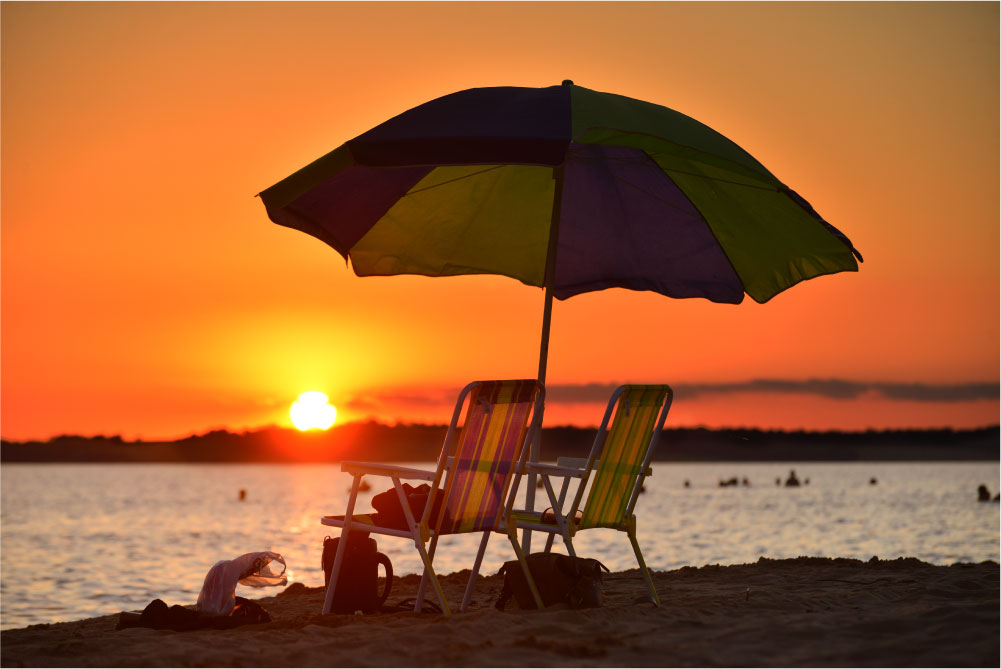
Meanwhile, the cities populated by Japanese and European immigrants, such as Carmen del Paraná, Pirapó, Hohenau, Obligado, La Paz, Capitán Miranda and Bella Vista tempt visitors to visit their famous restaurants, inns, and gastronomic routes, such as the Rice Circuit, where one can learn about the production of this cereal and its gastronomic derivation, the Yerba Mate Route, the Chipa Route (Ruta de la Chipa) of Coronel Bogado, and traditional snacks in the Jesuit Route.
Itapua also prides itself on being a true melting pot. Since the beginning of the 20th century, immigrants from different parts of the world have ventured into its impenetrable forests to turn it into a prosperous department, an example of sustainable development. To commemorate immigration and integration, the “National Festival of Collectivities” is held at the Parque de las Naciones, in the city of Hohenau, 40 km from Encarnacion and 408 km from Asunción, between the months of September and October.
The festivity ends with a Beauty Pageant where a Queen is elected, followed by a great party. The Hohenau City Hall and the National Tourism Secretariat (Senatur) organize this event every year.
For lodging, the offer throughout the department is wide, varied, and high-quality. One can stay in 5-star hotels in Encarnacion, lodgings or comfortable and picturesque tourist inns.
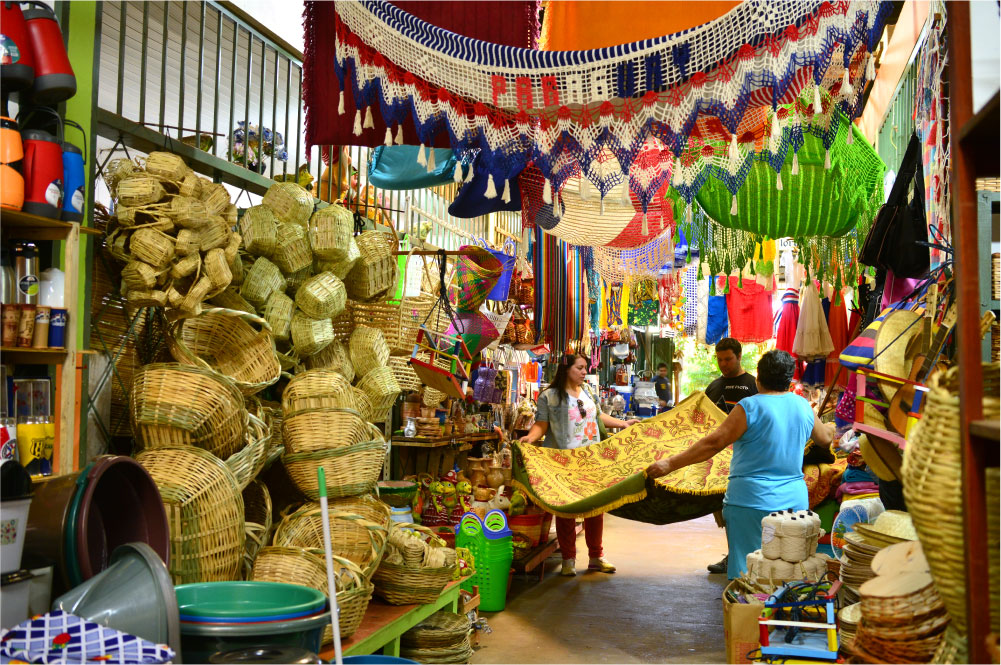
The capital of the department of Itapúa, Encarnacion, originally known as the “Pearl of the South”, is also considered today as the “capital of the Paraguayan summer”.
A modern city, with numerous attractions for visitors, such as its waterfront, its beaches on the Paraná shore, green spaces, historic buildings, museums, restaurants, hotels, and its well-known carnivals. Some of the beautiful beaches that bathe its coasts on the Paraná River are San José, Pacú Cua, San Isidro and Mboi Ka’e.
Emblematic civic places include the Plaza de Armas, created almost at the same time as the city’s foundation, and which houses the Japanese Garden, ponds, monuments, trails, children’s games and the 220-year-old Curupay tree, which has been declared a Natural Monument. In addition, tourists can visit the the San Pedro steps, a space designed for recreation, which offers playful games.
Among its numerous tourist attractions is what is known as the “Circuit of Faith”, which includes Catholic, Orthodox, and Christian temples, and pilgrimage and sacred art centers.
In addition, tourists can also visit the Monument to the Heart of San Roque, in homage to the founder of the city, the Tupasy Rape (Mother Mary’s Road) and the emblematic Virgin of Itacuá Sanctuary.

Tourists also use Encarnacion as a base to visit the Jesuit Missions of Trinidad del Paraná, Jesús de Tavarangue and the San Rafael National Park.
The Encarnacion Carnival deserves a special chapter, also known as “corsos encarnacenos”. It is a celebration that mobilizes the entire community and gathers the entire country, in a festivity and competition that surpasses itself in creativity and luxury year after year, and has transcended borders today. Since 2014, carnivals have been held at the Municipal Civic Center (also known as the “Sambadrome”), located between the Costanera Avenue and the Gaspar Rodríguez de Francia Avenue, on General Aquino Street; with a capacity of approximately 12,000 people.
The Carnival Museum is in the Sambadrome itself, under the VIP balcony. Here, one can appreciate the carnival’s history as well as photos and information of each year’s winners.
